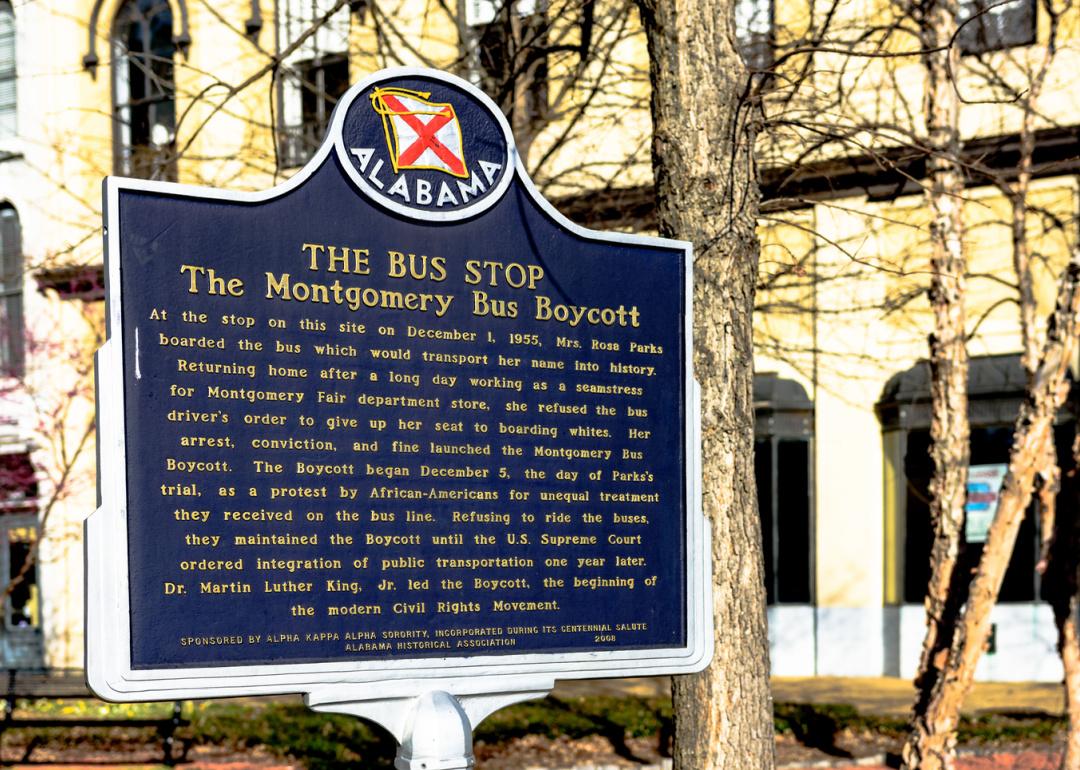
Explore historic sites commemorating Black history in Oklahoma
Explore historic sites commemorating Black history in Oklahoma
The legacies of influential Black Americans have not always been acknowledged, so it's not uncommon that modern-day residents may overlook the historic sites of their own cities.
While some historical Black figures in the U.S. are more well-known than others, there are in fact thousands of people dating back generations to 17th-century slavery who left traces of their visions and impacts all across the country. Whether prominent figures such as Robert Abbott, who founded one of the largest African American newspapers in the country, or more under-the-radar originators such as Obrey Wendell Hamlet, who cultivated unique vacation experiences in the Rocky Mountains, one thing's for certain: There is far more uncharted Black history in this country than charted.
Stacker identified historic sites commemorating Black history across 47 states, using the National Register of Historic Places. North Dakota, Vermont, Hawaii, and Wyoming did not have Black historic sites listed on the registry. While some states, especially in the South, are home to many sites central to the civil rights movement, Stacker listed the total sites in every state and the names of three historic sites where available. You can visit the full registry of 232 historic sites and explore the Civil Rights Trail to learn about additional locations across the U.S.
Read on to explore and learn about the historic sites celebrating Black history in your state, or read the national story here.
Oklahoma by the numbers
- Sites commemorating Black history: 65 (4 with state significance, 2 with national significance)
- One-hundred-and-one Ranch (Ponca City)
- Boley Historic District (Boley)
- Langston University Cottage Row Historic District (Langston)
The Boley Historic District is a region of an all-Black town founded in Boley, Oklahoma, in 1903 and incorporated in 1905. The town was named after J.B. Boley, a white man who built a railroad in the middle of the town and who believed that Black people could take care of themselves. Boley's fertile farmland garnered the attention of settlers from other states such as Texas and Georgia, who saw it as an economic opportunity. Today, people can still take a tour to experience the Boley Historic District.
Continue reading to see which sites commemorate Black history in other states in your area.
Arkansas
- Sites commemorating Black history: 67 (15 with state significance, 4 with national significance)
- Centennial Baptist Church (Helena)
- Green House (Little Rock)
- Lake Nixon (Little Rock)
Dr. Elias Camp Morris, born into slavery in 1855, became a leading figure in Arkansas' Black community. Morris was the pastor of Centennial Baptist Church in the city of Helena, which served as the headquarters of the National Baptist Convention where Morris was president. He also played a crucial role in the Arkansas Republican Party.
Colorado
- Sites commemorating Black history: 13 (3 with state significance, 1 with national significance)
- Winks Panorama (Pinecliffe)
- Fort Lyon (Las Animas)
- Ford, Barney L., Building (Denver)
In the early 1920s, entrepreneur Obrey Wendell "Winks" Hamlet decided to open a lodge where the Black middle class could enjoy leisure time and experience the outdoors with their loved ones. Wink's Lodge, also referred to as Wink's Panorama, soon became a go-to destination for Black travelers and the Black elite such as Lena Horne, Zora Neale Hurston, and Duke Ellington. The lodge held significance as being a rare mountain destination experience during a time of unrest. Hamlet managed the lodge until his death in 1965, and Wink's Panorama closed soon after.



